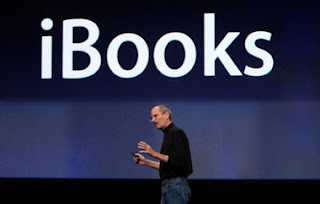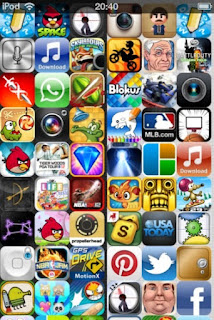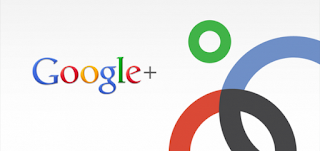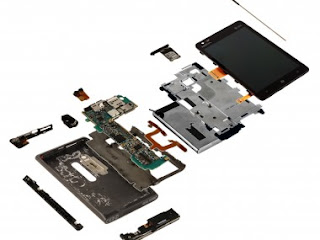Developers don’t have to wait for a fully baked version of Apple TV to come out to get a feel for
how their apps will play on the big screen.
Although an eco-system for Apple TV apps does not yet exist, there are dozens of quality iOS applications that are best consumed on an HDTV via AirPlay Mirroring. Creating apps specific to the leaned-back setting of the living room requires more than just supersizing titles originally conceived for smartphones or tablets. Successful Apple TV apps need to source and showcase entertainment, news and social activity in ways not currently possible via cable, satellite or video streaming providers.
Below are the 10 best iOS apps available on Apple TV today. Note that no games are featured here as that topic requires its own standalone assessment. I am also not including obvious titles like the pre-installed YouTube, as well as mainstream subscription-based services like Netflix and Hulu Plus. The apps showcased here provide a glimpse into what to expect in an app-enabled Apple television, and serve as models for any developer gearing up for the new platform.
Video Curation And Search
The 500-channel universe seems so passé. In a world with seemingly unlimited video options, these apps help surface clips and programs most important to you.
Showyou (iPhone, iPad: Free)
In many ways a Flipboard for video, Showyou elegantly displays clips shared by your social networks and other reliable sources. The app is currently divided into four distinct channels. In addition to showcasing videos shared by Facebook and Twitter contacts, Showyou has channels for overall popularity as well as for individuals and publishers you follow within the app. Notable members of Showyou include tech commentators Robert Scoble and John Gruber.
As well, from Funny or Die to Charlie Rose to NASA TV, there is a nice variety of publishers whose videos you may not otherwise see. To date, Showyou has tracked more than one billion social signals for approximately 40 million videos. Its video search engine is informed by all of this social behavior and is noticeably improving over time.
Visually, Showyou has a playful yet structured interface. The app displays streams of videos by channel in reverse chronological order starting at the top of the screen. More than even YouTube, Showyou is the best app for discovering new videos that are contextually relevant. It is also unlike any broadcast or cable network you will ever find.
Squrl Video Discovery (iPhone, iPad: Free)
Squrl categorizes videos from publishers better than Showyou and any other app optimized for AirPlay Mirroring. The app’s taxonomy for showcasing publishers is intuitive (Comedy = College Humor and Team Coco TV and Sports = Deadspin and The Bleacher Report, for instance). The app also has a faceted search layout, where results are sorted by relevancy within Squrl, how they appear on YouTube and where they are found within related YouTube playlists.
Squrl’s social integration, however, is lacking. Compared to Showyou, the shared videos from Facebook and Twitter contacts seemed delayed upon multiple viewings. As well, Squrl’s layout is a bit too cookie-cutter, making it more difficult to discover clips you didn’t even know you were interested in viewing. The app is still an extremely worthy download.
From The Broadcasters
Of course, it’s not wise to live off of curated YouTube clips alone. Here are the best examples of
how broadcasters are approaching apps for TV.
Touchtv (iPad: Free)
If you cut the cord from your cable or satellite provider but still want a taste of broadcast entertainment and mainstream news and sports coverage, Touchtv is your go-to app. Developed by the team behind news aggregation app SkyGrid, Touchtv airs short (on average three of four minutes) video clips from most major broadcast and cable networks. As Touchtv works in some capacity with each network it distributes, the production value of every clip is quite high (even if they leave you wanting more).
Touchtv has the slickest interface of all the video aggregation apps. You can select feeds from approximately 40 networks, which then appear as miniature squares on the homescreen. Tap a station like ESPN or Nickelodeon, and you see the most recent video. Scroll to the right to see the next video in line, or press the “Done” icon on the upper left part of the screen to see a more comprehensive directory.
The biggest complaint with Touchtv is that the videos are not full-length, and are essentially appetizers of programming still most easily accessed via cable or satellite providers. This is more of a licensing rather than a technological restraint, however. SkyGrid CEO Kevin Pomplun explained to Robert Scoble earlier this year that he is confident that the networks will eventually make all of their programming available via apps.
PBS KIDS Video (iPhone, iPad: Free)
My two-year-old son has no idea how to use a remote control, but is able to find episodes of Curious George and Cat in the Hat easily within this app. You can’t get a better testimonial than that in my household. While PBS KIDS Video is not technically optimized for AirPlay Mirroring as of this writing, the app and its more than 1,000 children’s videos display beautifully on Apple TV. The official ABC Player app is AirPlay optimized, and shows full-length episodes of dozens of shows (with limited commercial interruption) that air on the network.
Music Appreciation
It is highly likely that Apple’s next television offering will be a full-fledged media hub, forever impacting how we consume music in the living room. While no app today rivals YouTube for video music discovery on Apple TV, these independent titles are worth a look.
Qello (iPhone, iPad: Free, with $4.99 monthly subscription)
For professionally-produced, high-definition concert footage, Qello is currently without peer. The
company has licensing agreements with the rights holders, and the app’s ever-expanding library will please most rock, jazz and hip-hop fans. Concert films are categorized by artist, genre, and decade. The app also makes recommendations based on what is in your iTunes library. While a fair amount of concert and documentary footage can be viewed for free, an All-Access pass will run you $4.99 per month.
Other notable music apps that feature videos optimized for AirPlay Mirroring are Band of the Day and History of Jazz — an interactive timeline, both developed by 955 Dreams.
News and Current Events
If you’re looking to be informed without the bias of cable news outlets or the ambulance chasing absurdity of your local broadcast, these apps are your best bet.
Newsy for iPad — Video from Multiple Sources (iPhone, iPad: Free)
Newsy packs a lot of information and vantage points into its two-to-three minute video clips. The aim of each story, presented by in-house newscasters, is to provide multiple points of view around the biggest trending topics each day. Any given Newsy story can blend the biases of The New York Times or Fox News into one unique take. Newsy is a partner of the elite Missouri School of Journalism, and the app also serves as a vocational laboratory for those still willing to make a go of it in the news industry. Tap “Play All” on Newsy to watch its most recent coverage, and compare its performance and what you learned against the more established cable news networks.
Ustream (iPhone, iPad: Free)
This live video streaming service, originally conceived for the web, is a great preview guide for what individuals and organizations are broadcasting from all over the world. While Ustream is used by many to upload and transmit videos, its best application for AirPlay Mirroring is as a conduit to live or super-recent events, lectures and concerts that can be tapped into from the comfort of your own home.
Special Interests
As independent developers begin creating apps specific to Apple TV, a world of possibilities for longer tail interests awaits. These are the best apps optimized for AirPlay Mirroring to make you think, feel and breathe.
SnagFilms (iPad: Free)
More than 3,000 documentaries are contained within SnagFilms, which also exists online and via applications on multiple platforms. You can spend hours, if not days and weeks, watching award-winning documentaries on culture, politics, history and the arts. The biography library here is a nice antidote to the watered-down fare now found on A&E. SnagFilms is also a boon to individual filmmakers who have trouble finding distribution on traditional outlets.
TED (iPhone, iPad: Free)
While the now well-known global set of conferences technology, entertainment, and design conferences known as TED already have a prolific presence on Apple TV via podcasts within iTunes, accessing TED Talks to watch on the big screen is much more intuitive with its iPad app than the existing iTunes interface. The “Inspire Me” feature — where the app will create a playlist around a user’s given interest and amount of discretionary time — is not something that could be easily programmed with an Apple remote.
Authentic Yoga with Deepak Chopra for iPad (iPad: $1.99)
As a long-time practitioner of Bikram and Vinyasa Yoga, I’m not ready to ditch my studio membership to downward dog in front of the boob tube. But this app, which lets users create playlists of poses, is better and more economical than any DVD you can buy.
But what about Google TV?
While Google has operated its own television platform since 2010, like Apple TV, it has yet to draw a critical mass of mainstream users. My bet is that once Apple finally goes all-in on TV, Google will strike back strongly, very much like it did with its Android mobile operating system. In the meantime, here are some interesting Google TV apps worth getting to know.
Redux for Google TV: Curated content from the major broadcast and cable networks.
Qello for Google TV: See above, this music and concert app actually debuted on Android before iOS.
News Republic for Google TV: Popular smartphone and tablet app optimized for Google TV. More than 5,000 journalists curate thousands of stories each day.
Thuz Sports for Google TV: Sends push notifications when the game you’re interested in is in the balance.
TV & Movies for Google TV: This Google-developed app looks at all content sources (cable, satellite, Netflix, YouTube, etc.) and makes viewing recommendations.
Source







 7:43 PM
7:43 PM
 techstorelk
techstorelk























